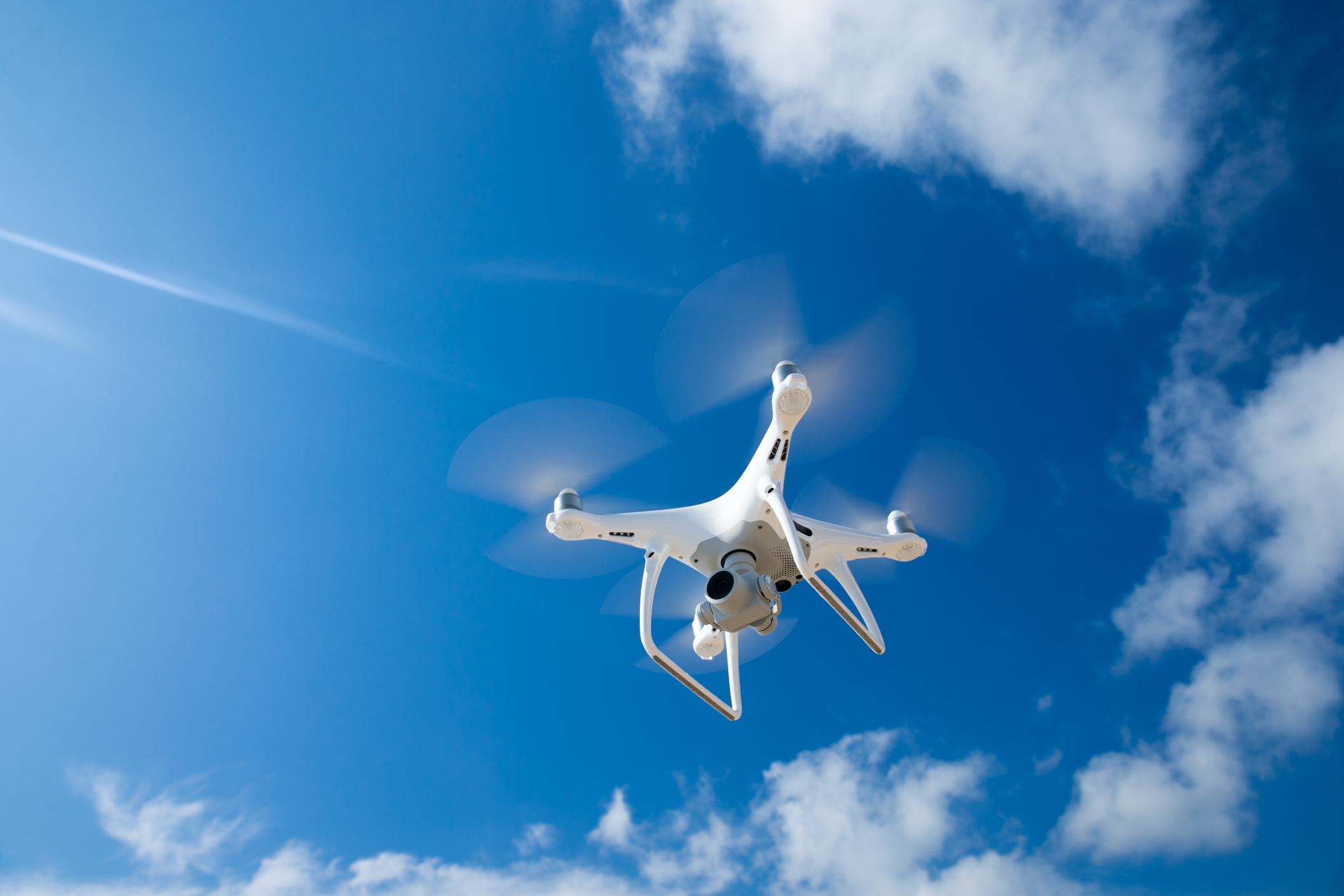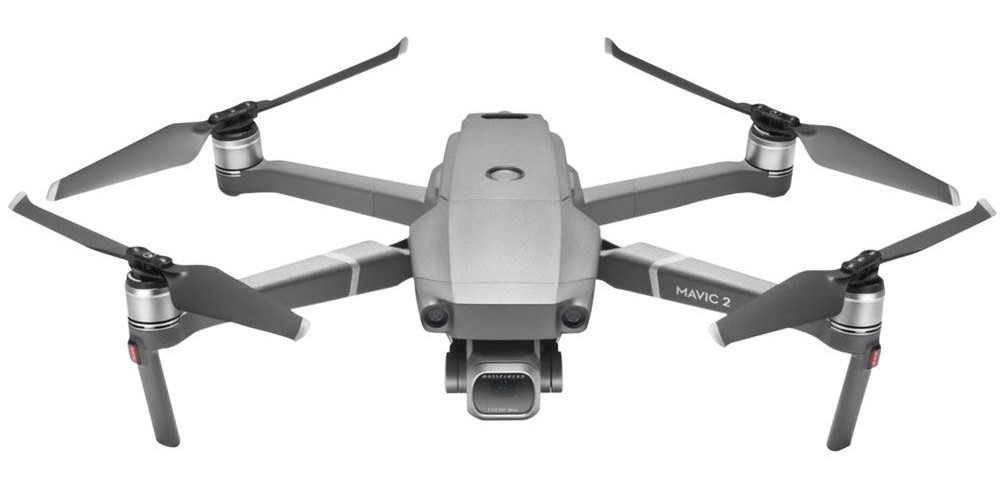How to Choose the Right Aerial Photography Drone

Photography and videography continue to evolve, and nowhere is it evolving faster than in the world of drones. Aerial photography drones are more mobile and compact than conventional photography methods, allowing photographers and videographers to capture photos and videos from different and more unorthodox angles, including first-person views that would be nearly impossible to achieve with traditional methods. The industry has rapidly adopted the use of aerial photography drones, and they are fast becoming required to keep up with trends. Even hobbyist photographers have gotten into the drone space.
And, while there are different types of aerial photography drones available, such as fixed-wing drones, single rotor helicopters, and hybrid VTOLs, we’re going to focus on the most common of drones (and probably the one you think of when you hear the word “drone”), the multi-rotor drone.
They are used by both enthusiasts and professionals as they are usually the most cost-effective option. One of the most common uses for multi-rotor drones is aerial photography and above-ground video surveillance. It is also possible to further categorize the multi-rotor drones based on the number of rotors they have; drones with three rotors are called tricopters; drones with four rotors are called quadcopters; and drones with six rotors are called hexacopter. Quadcopters are the most well-known and most-used version of aerial photography drones. You can easily buy a quadcopter for around $150, such as the DJI Tello, and take it out for a spin even if you have no drone experience!
So, what does it take to get into drone photography? We’ve broken down everything you need to know to get out there and get flying.
Please check with local and federal enforcement agencies for licensing and flight restriction requirements before purchasing or flying a drone.
What are Factors to Consider when Buying a Drone for Aerial Photography
Purchasing a conventional drone is a technical decision requiring proper research. Add to it the aspect of aerial photography, and it becomes even more daunting. Thankfully, all this research can be broken down into a few essential factors. So, don’t worry, take a breath, and we’ll go through the steps one by one to make sure you’re choosing the drone that’s right for you.
Understand Your Needs
Before starting your research, you should ask yourself a few essential questions:
· Why do you need the drone?
· What are the essential features that your drone must include?
· How would you classify your skill level as a photographer?
· Do you need the aerial photography drone for professional photography?
· Do you want a drone that has the option of fixing any camera on it or do you want one with a camera included?
· Will the speed of the drone impact your photography? How fast do you need it to be and why?
· How long should the aerial photography drone be able to fly?
What Features do I need in my Drone?
The importance and availability of features will largely depend on your particular needs. For instance, you might be looking for a drone for recreational flying and may not want a camera. Or, you might be a professional photographer who needs a drone with longer flight times and advanced features to offer the best service and experience to his/her clients.
What is a Drone Made of, and How Does that Impact Cost?
The cost of aerial photography drones varies widely. This is because of the quality of manufacturing and material used. Since it is a technical and expensive item, you want to ensure that you are buying it from a well-known manufacturer. Inexpensive aerial photography drones are usually built from plastic and are of inferior quality. However, if you are just getting into drone flying, a plastic drone may be the way to go. But try and find one made of abs plastic, as it is more durable than regular plastic and there’s a very good chance you’ll crash more than once, and you want a drone that can take a bit of a beating without breaking the bank. On the other hand, if you use it for professional photography or videography, you will want to invest in a much better-quality drone. Drones made from fiberglass and carbon fiber are usually more expensive but are obviously superior quality and more durable.
What Range do I Need My Drone to Reach?
Depending on your needs, you need to ascertain how far your aerial photography drone needs to fly. Inexpensive drones usually have a range of up to 30 meters, which may be sufficient if you are just starting out. More expensive drones have a longer range, but the range requirement will still vary depending on your distinct needs. For example, a wedding photographer may be happy with a sophisticated aerial photography drone with a range of around 30 meters. However, that will most likely not be sufficient for a realtor who uses the drone to capture 360-degree views of luxury properties along with their grounds.
What Quality Camera Should My Drone Have, if Any?
If you are purchasing a drone for aerial photography, it is important to carefully consider the quality of the camera. Although some drones have cameras pre-fitted, others have the option to insert any camera in them. Some experts recommend purchasing an aerial photography drone already equipped with a sophisticated camera, as pre-fitted drones are generally lighter than drones you can attach full-size cameras to.
Along with the features of the drone, it is important to understand and research the features of the camera you are interested in. This includes the megapixels of the camera, quality of photos or footage the camera can capture at a distance, the zoom lens quality, and battery life. As a beginner, we'd recommend starting with a mini drone equipped with a camera.
What to Consider for a Drone’s Battery Life
Every drone has a different battery life, and that battery life can vary wildly depending on how you’re using it. The two most important factors to consider in an aerial photography drone’s battery are how long it can fly while taking photos or videos and how long it takes to charge. You need to buy a drone that can fly long enough to capture the photos or videos you need before its battery is drained. High-quality aerial photography drones generally take up to 2 hours to charge.
Bonus note: make sure replacement batteries and spare parts for your drone are easily available before buying.
Community Quest Clue: AERIALPIC
What is the Best Drone for a Photographer?
While every photographer has their own specific needs, use, and skill level, we’ve picked a fantastic drone for each skill level to get you started.
Beginners
It is very easy for beginners to feel overwhelmed by the sheer number of drones available, especially if they have never bought or operated a drone before. It is a good idea to start small and get a reasonably priced drone with a decent camera. This will allow you to practice both flying the drone and capturing photos and videos while improving your technique before investing in a more expensive model. And, while DJI offers some of the best and most expensive drones on the market, they also offer one of the best beginner drones: the DJI Tello. It’s portable, easy to use, and beginner-friendly - an excellent option to start aerial photography.
Enthusiasts
If you are an aerial drone photography enthusiast who has built your skill, it is time to take your flying to the next level by investing in a better-quality advanced photography drone. The DJI Mini 2 is a good fit for enthusiasts who are looking to grow in their professional careers and offer clients a unique perspective. This model is great for photographers and videographers pursuing their passion, and delivers stunning, high-quality images, without breaking the bank.
Professionals
Since aerial photography drones are an essential part of a professional photographer’s equipment, you should always spring for the best option available to ensure superior results for your customers. And for that, we turn to the DJI Mavic 2 Pro. The Mavic 2 Pro features stellar 360-degree object avoidance, fantastic image, and video quality, and even supports two-pilot operation to set up the best possible shots.
Conclusion
The right drone for aerial drone photography will vary from one person to the next depending on needs. We recommended taking time to understand your needs and research the best option available for your skill level that fits your budget. Hopefully, we've given you the tools to do just that.
And if you're looking for even more guidance, be sure to stop by your local Micro Center and chat with our associates in the DIY section. They'll be happy to help you make the right choice for your needs!
Leave a Comment
Categories
- All Categories
- 1 The Blog
- 1 What's Trending
- 7.9K The Community
- 3.2K General Discussion
- 136 New Members
- 857 Consumer Tech
- 227 Prebuilt PCs and Laptops
- 166 Software
- 32 Audio/Visual
- 53 Networking & Security
- 4 Home Automation
- 5 Digital Photography
- 14 Content Creators
- 30 Hobby Boards & Projects
- 83 3D Printing
- 83 Retro Arcade/Gaming
- 61 All Other Tech
- 400 PowerSpec
- 2.6K Store Information and Policy
- 149 Off Topic
- 58 Community Ideas & Feedback
- 614 Your Completed Builds
- 4K Build-Your-Own PC
- 2.9K Help Choosing Parts
- 327 Graphics Cards
- 335 CPUs, Memory, and Motherboards
- 146 Cases and Power Supplies
- 54 Air and Liquid Cooling
- 49 Monitors and Displays
- 93 Peripherals
- 66 All Other Parts
- 65 Featured Categories
We love seeing what our customers build
Submit photos and a description of your PC to our build showcase
Submit NowLooking for a little inspiration?
See other custom PC builds and get some ideas for what can be done
View Build ShowcaseSAME DAY CUSTOM BUILD SERVICE
If You Can Dream it, We Can Build it.

Services starting at $149.99






